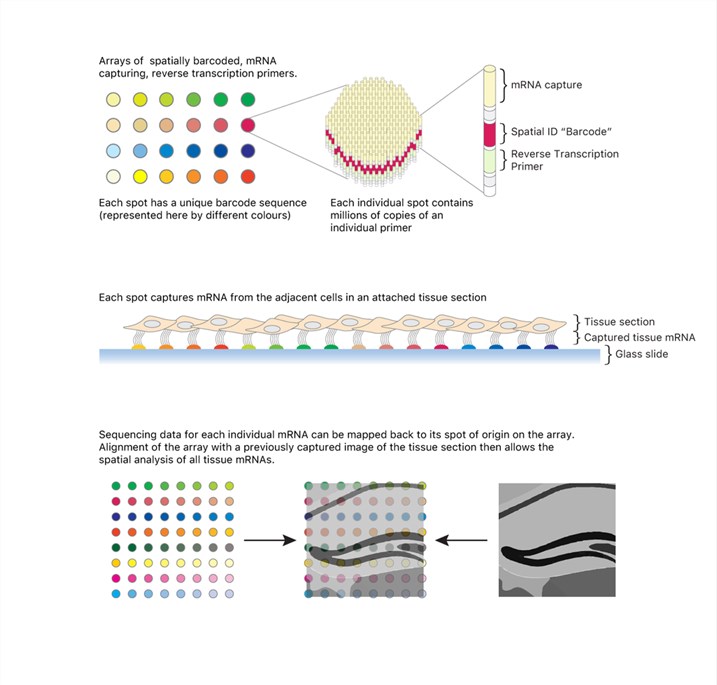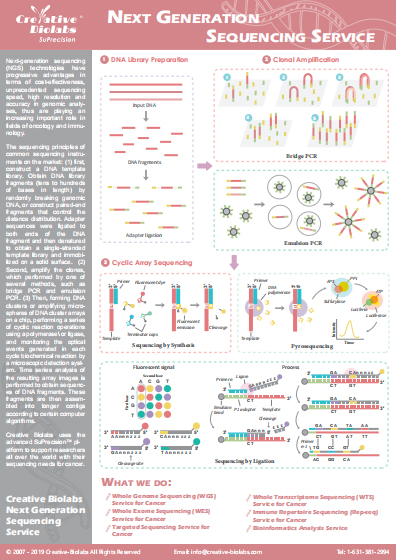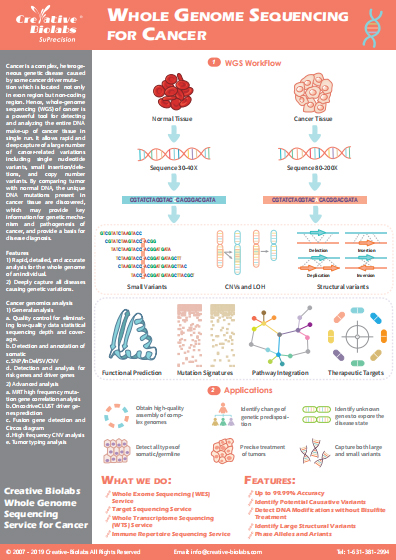
Spatial Transcriptome Sequencing Services for Cancer
Spatial transcriptome sequencing technology provides a powerful tool for investigating the gene expression of individual cells in their original location and has been used in many research fields including pathology, immunology, developmental biology, neuroscience, and oncology. In oncology research, spatial transcriptome sequencing combining with single-cell sequencing is very valuable to research tumor microenvironment, tumor development, invasion, and metastasis as well as tumor-infiltrating lymphocytes, etc. Creative Biolabs is an expert in NGS-based cancer research who offers one-stop spatial transcriptome sequencing services with high coverage and high resolution to support cancer research. Furthermore, we have also established a spatial multiplex imaging platform that allows the analysis of multiple biomarkers in a tissue section while preserving their spatial location.
Introduction of Spatial Transcriptome Sequencing
Spatial transcriptome sequencing technology is a groundbreaking technology that combines 1 histological morphology and transcriptome sequencing to spatially resolve RNA-seq data, and thereby all mRNAs, in individual tissue sections. The principle of spatial transcriptome sequencing is based on: each spatial slide contains 4 RNA capture regions of 6.5 × 6.5 mm2, and each RNA capture region contains 5000 barcoded spots. When the tissue frozen section is attached to the spatial slide, cellular mRNA is released and moved into each spot, where mRNA will be ligated to corresponding barcodes. These barcoded mRNAs are further processed from library construction and sequencing. Thus, each mRNA can be mapped back to its original position in the tissue section. The spatial transcriptome sequencing can reveal the gene expression in different regions of tissue sections, providing a new solution for the study of the cellular microenvironment, intercellular signaling pathway, and spatial heterogeneity. Especially in cancer research, spatial transcriptome sequencing provides a powerful tool. It enables scientists to explain tumor microenvironment and tumor heterogeneity by revealing the difference of gene expression between tumor tissues and paracancer and normal tissues at a spatial location. It is also applied for investigating the effects of tumor cells on normal cells at different stages of tumor development, invasion, and metastasis.
 Fig.1 Overview of spatial transcriptomics technology. Distributed under CC BY-SA 4.0, from Wiki,
without modification.
Fig.1 Overview of spatial transcriptomics technology. Distributed under CC BY-SA 4.0, from Wiki,
without modification.
Spatial Transcriptome Sequencing Workflow

Bioinformatic Analysis Workflow

Sample Requirement
- Frozen tissue: fresh tissues are quick-frozen with isopentane precooled by liquid nitrogen and stored at -80℃.
- OCT embedding tissue: OCT embedding of fresh tissue after isopentane quick-freezing, or quickly freezing fresh tissue at -80℃ after OCT embedding. Note to mark the direction of the sample.
- Storage and transportation: Stored at -80℃ and transported on dry ice.
If you are interested in our services, please feel free to contact us for more details.
Resources
Infographics
Podcast
- Whole Genome Sequencing (WGS)
- Whole Exome Sequencing (WES)
- Targeted Sequencing
- Whole Transcriptome Sequencing (WTS)
- Immune Repertoire Sequencing (Rep-Seq)
- Epigenomics
- 3D Genomics
- Metagenomic Sequencing
- ctDNA Sequencing
- Single Cell Sequencing




